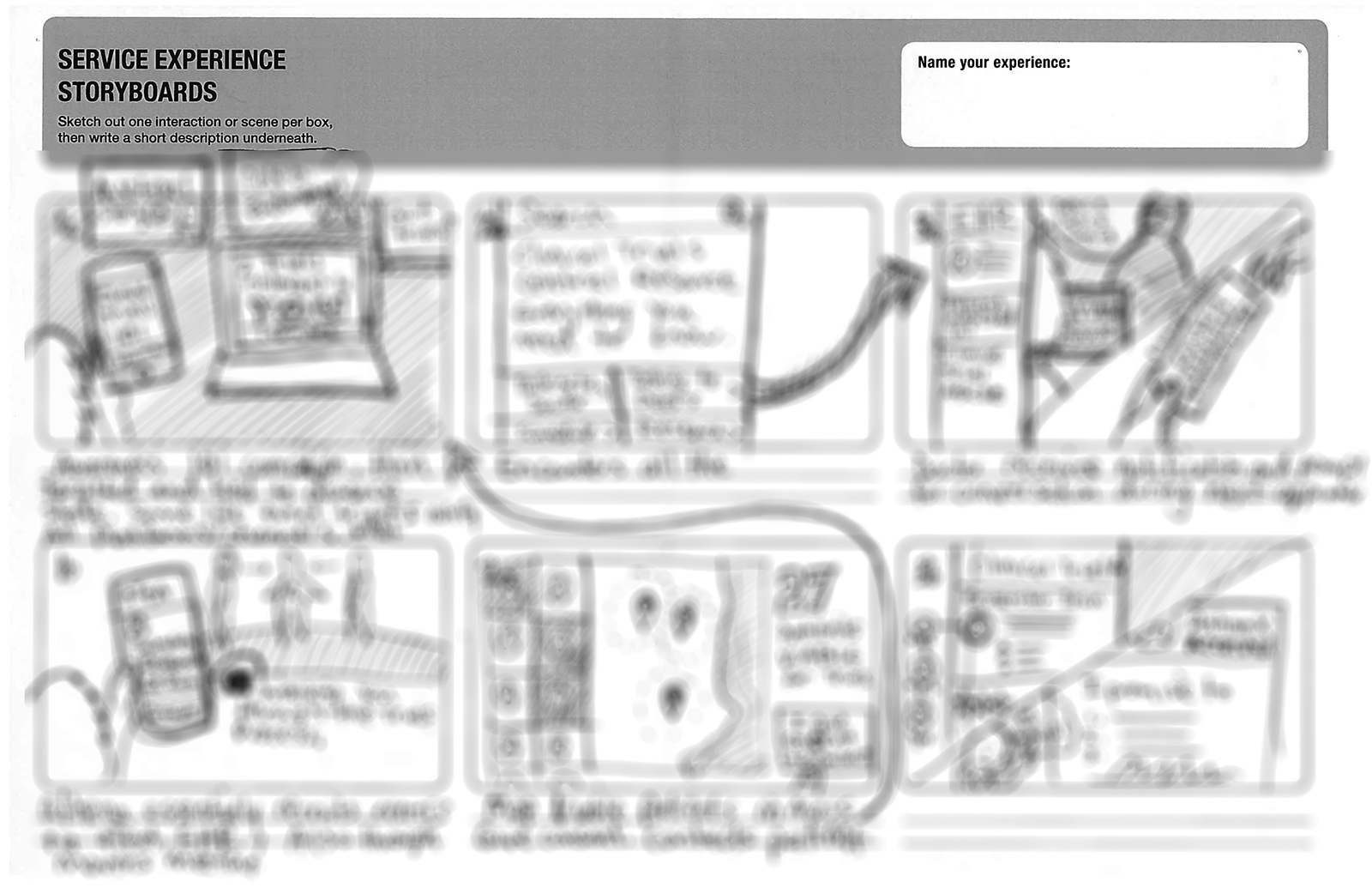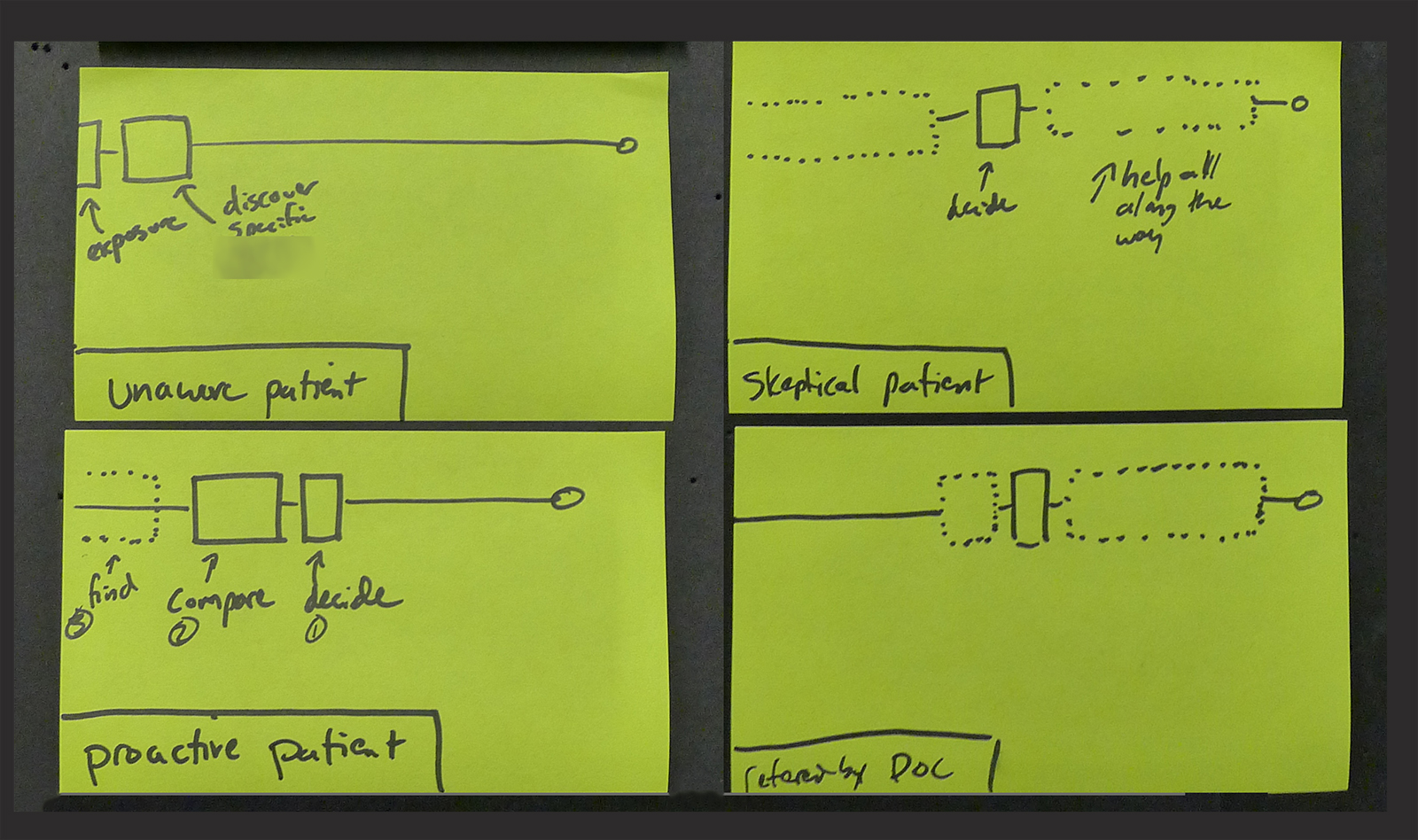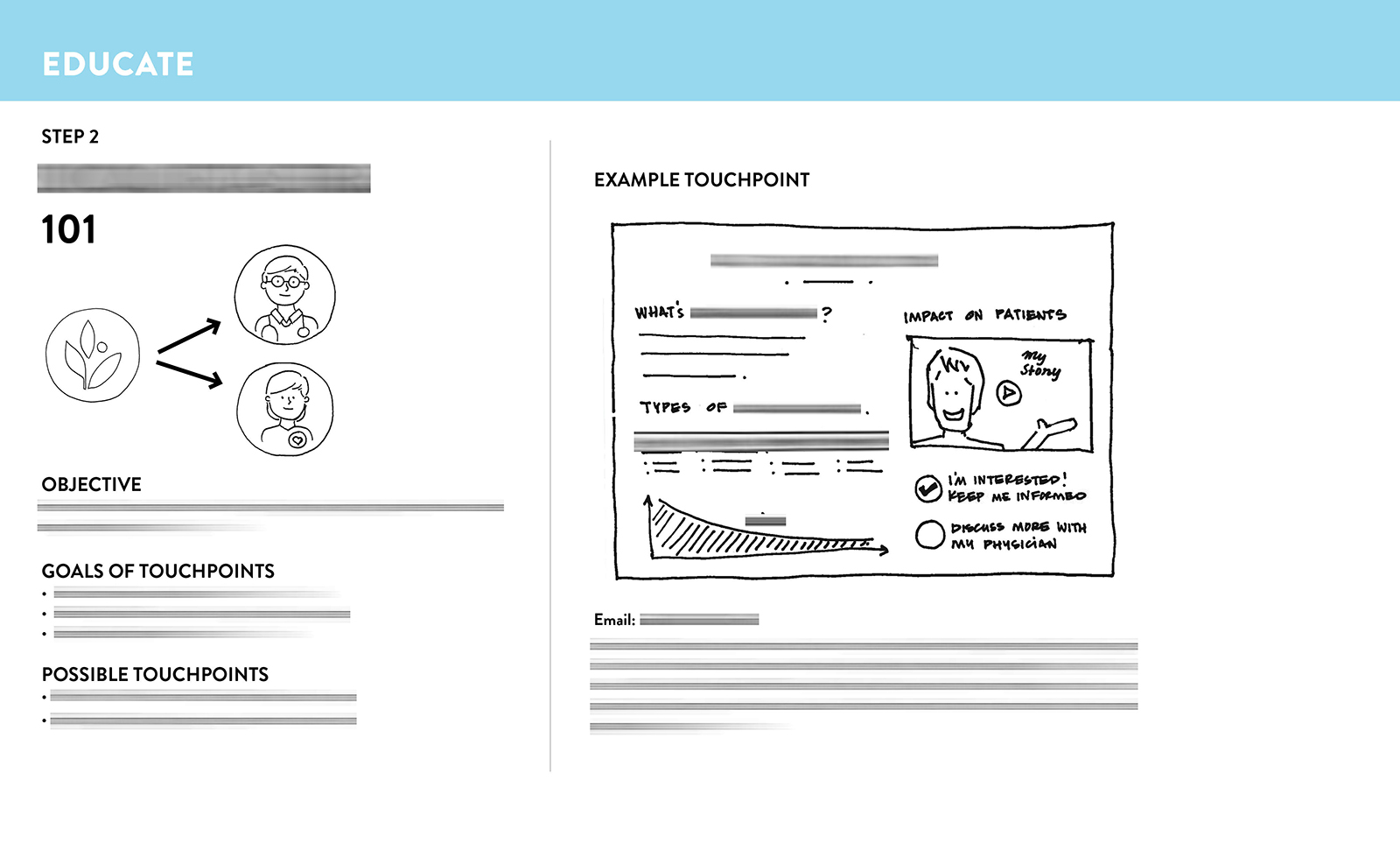2 designer team | 4 weeks | athenahealth | 2015
PROJECT OVERVIEW
Due to the strategic nature of the project which is not yet public, I cannot share the topic or details of the content online, but I've tried to provide some background on the process (below) with details redacted or obscured.
As part of my work on the Strategic Design team at athenahealth, I was asked to help envision what a service offering around a hot healthcare topic that would be an entirely new area for our company, would look like.
A pilot of the new business had been approved based on a high revenue potential and market need, but the executive team didn't know what our offering would actually look like. They looked to us to help them imagine what kind of offering to build, and how to build it.
PROCESS IN-DEPTH
ESTABLISHING THE EXPERIENCE BASELINE
INITIAL RESEARCH
With only 1.5 weeks to get up to speed on the topic area and complete our research, we took a guerilla research approach. We spoke with SMEs and patients who have experienced this process, reviewed personal accounts online, and read through industry studies and academic research. We looked at the motivations and challenges for the five separate actors involved, with particular focus on the patient and physician perspectives.
THE PATIENT-CENTERED JOURNEY & PAINPOINTS
To bring together what we had learned, we created a serious of framework, actor profiles, and a began compiling the key information into a journey story to share.
To share out this journey, we created two large-scale posters (obscured for confidentiality):
GENERATIVE WORKSHOP
PATIENT JOURNEY SHAREOUT
These posters were then used as part of an interactive workshop with SMEs and key stakeholders. Participants were encouraged to add and challenge elements of the journey, helping the group arrive at a shared consensus around the as-is experience from the patient point-of-view.
CONCEPT GENERATION
We then worked with the group to choose the top painpoints our service should try to address, and then facilitated brainstorming around each area. Lastly, we facilitated concept generation around what a service that helped alleviate these issues might look like.
Envisioning an end-to-end service
IDEATION
After the workshop, we sought to synthesize what we have learned from the participants feedback and concepts. We began crafting a to be journey that would help us illustrate some of the design principles emerging from our work, and allow us to highlight some of the most critical moments of the journey we felt the company must get right to succeed.
REFINEMENT, PRINCIPLES & PRESENTATION
After identifying and iterating on some key moments in the to-be journey, we packaged our future service proposal up to be shared with the larger team. We created an overview presentation that tied key insights from our research and the workshop into principles for the service to follow moving forward. Select deliverable examples with details obscured for confidentially:
RESULTS
Our work was very well received within the organization, which had previously had some trouble translating similar projects into actionable plans. Our service proposal greatly influenced the direction of the project and was pivotal in the VP of Product Development's decision to move forward with the project.
While the project was initially structured solely around business assets that could help us capitalize on the revenue opportunity, following our engagement the language and planning for the project shifted. The team took ownership of the win-win-win point-of-view we had advocated. Even after our involvement had faded, the team continued to frame the project as being about meeting the needs of the market, our patients, and our physician practices, together. This project became a showcase for how solving for the interwoven needs of different actors can be the key to unlocking a major revenue opportunity for the business.














